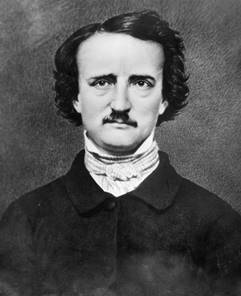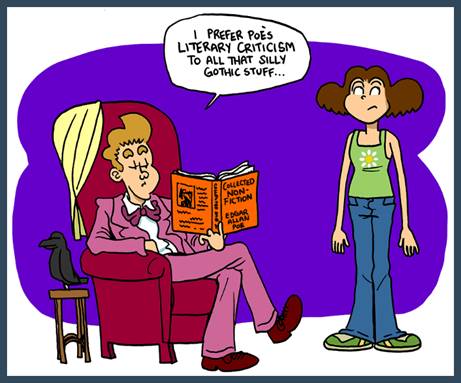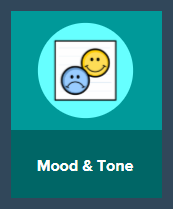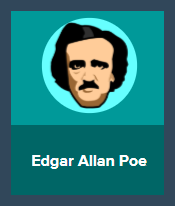Fiction

Edgar
Allan Poe was an American poet and short-story writer.
Reading Information Text (11-12.10)
By the end
of grade 11, read and comprehend literary nonfiction in the grades 11-CCR text
complexity band proficiently, with scaffolding as needed at the high end of the
range.
Let's Practice: Key Terms
Section A: Fiction
A fiction text is literature created from the imagination, not presented as fact, though it may be based on a true story or situation. Types of literature in the fiction genre include the novel, short story, and poems. “The Tell-Tale Heart” is an example of a short story fiction book.
Fiction
contains certain symbolic and thematic features known as “literary merits.” In
other words, fiction narrates a story, which aims at something more significant
than merely a story. In this attempt, it comments on something meaningful
related to social, political, or human-related issues.
Fiction may
be based on stories of actual historical events. Although fictitious characters
are presented in a fictitious setting in stories and novels, they may
have some resemblance to real-life events and characters. Writers alter their
characters very skillfully when they take them from actual life.
The function
of fiction is to entertain, educate, and inspire the readers and the audience.
Literature in general, and fiction in particular, is capable enough to sweep
our emotions. Fiction gives the audience an experience beyond their daily
lives. It provides them an insight into the life of the characters, their
manners, and events related to them.
|
Elements of
Fiction |
||||
|
Theme |
a universal message that is the central ideas of work in
literature |
Conflict |
The central problem in a story |
|
|
First
Person - Point of View |
The narrator tells the story from their point of view |
Imagery |
The descriptive language that appeals to the readers five
senses |
|
|
Plot |
Significant events in a story that explain what the story is
about |
Foreshadowing |
The author provides hints to the reader to suggest that
something will happen later in the plot |
|
|
Tone |
Words are chosen by the author to describe a character,
setting or event in a story |
Flashback |
The narrator leaves the present and tells a story that
happened in the past |
|
|
Main Idea |
The summary that explains what the story is about |
Suspense |
The anxiety and excitements about what will happen next in a
story |
|
|
Mood |
The feeling and emotions a reader gets while reading a story |
Irony |
Dramatic irony: when the reader knows more than the characters
know Verbal irony: when a character says something but means
the opposite Situational irony: when the opposite what the reader expects
to happen occurs |
|
Let's Practice: Video
Quiz
Section B: Edgar Allan Poe

Edgar Allan Poe (1809-1849)
was an American author best known for his dark and ominous short stories and
poems. Poe experienced tragedy in his life. He was born into poverty, and his
father was an alcoholic who left when Edgar was young. His mother died of tuberculosis, and his
foster mother and his wife died.
Edgar Allan
Poe’s prolific writing career included 70 poems, 66 short stories, and one
novel. Edgar Allan Poe is considered an
author of Gothic literature. He gained
worldwide fame for his dark, macabre tales of horror, practically inventing the
genre of Gothic Literature. The
term Gothic fiction refers
to a style of writing that is characterized by elements of
fear, horror, death, and
gloom, as well as romantic factors,
such as nature, individuality, and very high emotion
Many of
Poe’s works have been adapted for film and television. Actor Vincent Price and
director Roger Corman teamed up for six adaptations between 1960 and 1965,
including movie versions of short stories like “The Pit and the Pendulum” and
“The Masque of the Red Death,” as well as the short story “The Tell-Tale Heart.”
Poe believed
that a perfect story should be readable in one sitting, that it should be a
tightly controlled, highly compressed narrative that hit on topics to which
everybody can relate. The short story of "The Tell-Tale Heart" is an
excellent example of Poe's theory of writing.
Let's Practice: Video
Challenge
Section C: The Tell-Tale Heart
The
Tell-Tale Heart, a short Gothic horror story by Edgar Allan Poe,
published in The Pioneer in 1843. This story starts without hesitation: a
nameless person explaining that he is and was extremely nervous,
but is not and was not insane. The narrator claims he has a "disease,"
which makes all his senses—especially his hearing—super-sensitive.
|
Characters |
|
|
The Narrator |
Nervous, paranoid, mentally ill, does not know the difference
between real and unreal |
|
The Old Man |
Has blue eyes and the narrator is afraid of him; sound sleeper |
|
The Three Policemen |
Don’t have any characteristics; they do play a significant
role in driving the plot of the narrator’s story |
|
A Neighbor |
A small role but essential role; shows us that the narrator
and old man are alienated from the community |
Read and Listen “The Tell-Tale Heart”
Let's Practice: Narrator
Timeline and Summary

